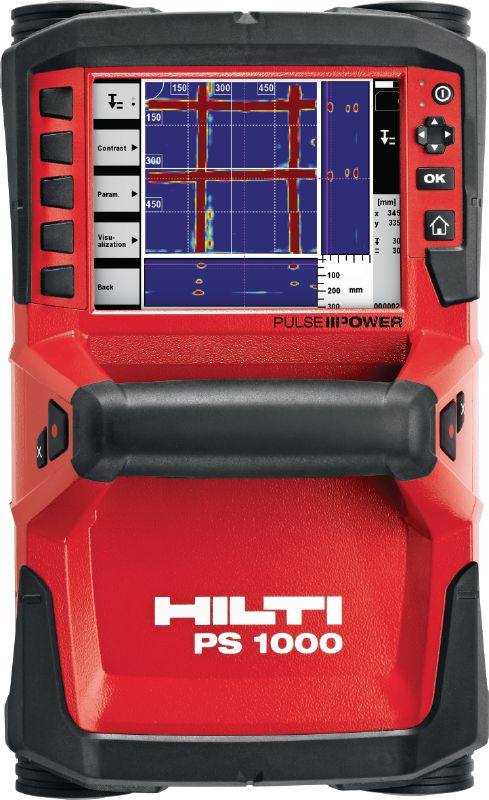Understanding RainierGPR Concrete Scanning: Crucial Advice
Understanding RainierGPR Concrete Scanning: Crucial Advice
Blog Article
Checking Out the Depths: A Comprehensive Guide to Concrete Scanning and Its Diverse Applications
In the realm of building and construction and infrastructure development, the thorough process of concrete scanning holds a crucial role in making certain the structural stability and security of jobs. As innovation proceeds to evolve, the applications of concrete scanning have expanded far past plain surface-level analyses.
Importance of Concrete Scanning
Understanding the importance of concrete scanning is critical in making certain the safety and security and honesty of structures during building and restoration jobs. Concrete scanning utilizes sophisticated modern technologies such as ground-penetrating radar (GPR) and electro-magnetic induction to identify ingrained things, voids, or other anomalies within concrete frameworks - RainierGPR Concrete Scanning. By carrying out detailed scans before boring, reducing, or coring right into concrete, building and construction groups can prevent unintended damage to crucial structural components like rebar, conduits, or post-tension cables. This proactive method not just prevents pricey repairs and task hold-ups yet also boosts general building and construction security by minimizing the danger of structural failures or collapses because of compromised honesty.
Moreover, concrete scanning plays an essential duty in ensuring compliance with building regulations and laws that mandate the security of existing structural components throughout building tasks. By accurately drawing up the interior make-up of concrete, scanning innovations enable building and construction specialists to make educated decisions that maintain the architectural security and resilience of structures and facilities projects. Basically, the significance of concrete scanning lies in its ability to secure both the architectural integrity and the workers entailed in building and construction endeavors.
Technologies Used in Concrete Scanning
Concrete scanning relies on innovative modern technologies such as ground-penetrating radar (GPR) and electro-magnetic induction to precisely find embedded objects and anomalies within concrete frameworks. Ground-penetrating radar runs by emitting high-frequency electro-magnetic waves into the concrete.
Electro-magnetic induction, on the other hand, works by producing electromagnetic fields around a concrete framework through a transmitter coil. When steel things are present within the concrete, they interfere with these magnetic fields, triggering eddy currents to stream via the metal. By measuring the changes in the magnetic fields with a receiver coil, the system can identify the place of metal things in the concrete.
These cutting-edge modern technologies play an essential duty in non-destructive testing, ensuring the safety and security and honesty of concrete frameworks in numerous markets.
Applications in Building And Construction Sector
Within the building sector, concrete scanning technology discovers diverse applications that boost task effectiveness and security. One key application is the discovery of rebar, post-tension wires, and various other ingrained things before drilling or reducing right into concrete frameworks. By accurately mapping out these components, construction groups can prevent costly damages, ensure structural stability, and protect against prospective security risks. In addition, concrete scanning is made use of for locating spaces, such as air pockets or areas of wear and tear within concrete, which can endanger the general toughness of a structure. By identifying these voids early on, building experts can take necessary procedures to address them and maintain the longevity of the building. In addition, concrete scanning plays a crucial duty in top quality control by confirming the thickness of concrete covers over reinforcement, ensuring compliance with style requirements and criteria. In general, the applications of concrete scanning in the building and construction market add significantly to enhancing job workflows, reducing risks, and supplying premium results.
Safety And Security Benefits of Concrete Scanning
In the realm of construction security, the application of concrete scanning innovation presents a critical advantage in preemptively identifying potential hazards and fortifying structural stability. By using advanced scanning techniques such as ground-penetrating radar (GPR) and electromagnetic induction, construction teams can properly find rebar, post-tension cables, conduits, and other surprise things within concrete frameworks. This positive approach considerably minimizes the threat of accidental strikes throughout drilling, cutting, or coring activities, thus stopping pricey problems, injuries, and job delays.
Additionally, concrete scanning boosts worker safety and security by providing real-time information about the architectural condition of concrete components. By addressing possible safety and security worries without delay, concrete scanning contributes to creating a secure working environment and reducing the other likelihood of architectural failures or crashes on construction websites.
Future Fads in Concrete Scanning
Arising improvements in scanning modern technology are positioned to revolutionize the field of concrete evaluation and analysis. One major trend that is obtaining grip is the assimilation of synthetic knowledge (AI) and artificial intelligence formulas right into concrete scanning gadgets. By harnessing the power of AI, these systems can examine huge quantities of information gathered throughout scanning processes to supply even more accurate and thorough insights into the condition of concrete frameworks. This can assist in spotting covert issues, forecasting possible structural failings, and also advising upkeep approaches.
One more substantial fad is the growth of more mobile and easy to use scanning gadgets. have a peek at this site Miniaturization of scanning tools permits less complicated accessibility to confined spaces and remote locations, making inspections much more thorough and efficient. In addition, innovations in wireless communication modern technologies make it possible for real-time information transfer and evaluation, facilitating quicker decision-making procedures.
Additionally, there is an expanding concentrate on sustainability in concrete scanning modern technologies - RainierGPR Concrete Scanning. Producers are progressively including green products and energy-efficient attributes right into their devices to reduce environmental effect. These future fads are Homepage readied to boost the performance, precision, and sustainability of concrete scanning methods, shaping the sector's future landscape
Verdict
In conclusion, concrete scanning plays a crucial duty in the building and construction sector by guaranteeing the safety and effectiveness of different tasks. As innovation advancements, the future of concrete scanning holds encouraging advancements for improving building and construction procedures.

Report this page